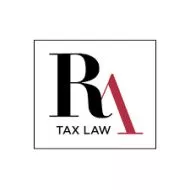The Federal Budget 2024 (the “Budget”), announced on April 16, 2024, proposed an increase in the inclusion rate for capital gains for individuals and entities such as corporations and trusts. While the Federal Government claims that the change will only affect the wealthiest 0.13 per cent of Canadian taxpayers, the impact of the change are likely to be broader that many expected.
The key points of the proposed changes:
Increase in Inclusion Rate for Individuals:
- Individuals with more than $250,000 in capital gains in a year will see an increase in the inclusion rate from one-half to two-thirds.
- Individuals will continue to pay tax on 50% of any capital gains up to $250,000 per year.
Increase in Inclusion Rate for Corporations and Trusts:
- The inclusion rate for all capital gains realized by corporations and trusts will also increase from one-half to two-thirds (there is no dollar threshold).
Effective Date:
- The new rules will apply to capital gains realized on or after June 25, 2024, just about two months after it was announced.
What does it matter?
The change of inclusion rate represents a significant shift in the taxation of capital gains, impacting both individuals and entities holding capital assets. The increase in the inclusion rate means that a larger portion of capital gains will be subject to taxation, resulting in higher tax liabilities for taxpayers who currently have significant unrealized capital gains. Let's use an example to explain.
An Example
Joe is living in Ontario. He is lucky as he owns a rental property which has increase in value since his purchase a few years ago, thanks to Toronto's crazy real estate market. He also purchased Bitcoins when its price was low in 2023. This year, he would like to sell his rental property and Bitcoins to fund his personal endeavor.
Say Joe realizes $350,000 in gains from the property sale and $50,000 in gains from the cryptocurrency sale, totaling $400,000 in capital gains for the year, the taxation of the totals will vary drastically before and after the June 25, 2024 update.
Under the current rule (before June 25, 2024):
Currently, taxpayers pay tax on 50% of the capital gains (meaning 50% is included in income for the year, and 50% is excluded). In this example, Joe's taxable income associated with the sale of his property and Bitcoins results in taxable income of $200,000 ($400,000 total, with only 50% being included as income for the year).
New rule (On and after June 25, 2024):
The tax treatment changes drastically due to the proposed increase in the inclusion rate.
Joe's taxable income for the same transaction will be $225,000. (50% of $250,000, the threshold amount where the inclusion rate changes, plus $100,000 (2/3 of the remaining $150,000).
This represents an increase of $25,000 in taxable income in the eyes of the CRA for just a single day of difference in the sale date.
Effect on Corporations and Trusts:
For corporations and trusts, which do not benefit from the $250,000 allowance, there changes in tax owing would be more severe.
Using the same example, if it's a corporation or trust who owns the same rental property and Bitcoins. Their taxable income would increase from $200,000 before the change, to approximately $266,667, representing a more than 30% increase in tax over capital gains.
What can I do?
Other than set aside more money to pay the CRA when the taxes come due for 2025, taxpayers and corporations may want to consider some alternatives:
- Realizing capital gains before June 25, 2024, to take advantage of the current 50% inclusion rate without a cap.
- Triggering deemed dispositions for certain properties, such as converting rental property to personal-use property, to adjust the adjusted cost base (ACB) and potentially reduce future tax liabilities.
- Evaluating the implications for corporations and trusts, including whether to rebalance the capital assets between the corporation and the shareholders to maximize the $250,000 allowance.
Sell, now?
Taxpayers with concrete plans to sell their capital assets in 2024 may want to consider selling capital assets before June 25, 2024. By selling before the new rules take effect, taxpayers can take advantage of the current 50% inclusion rate without being subject to the proposed increase.
This strategy can be particularly beneficial for assets with significant unrealized capital gains, such as stocks and real estate, as it may result in substantial tax savings. However, it's essential to carefully evaluate various factors before making the decision to sell, including:
- Timing of Sale: Consider whether selling now aligns with your overall financial goals and objectives. Evaluate market conditions and potential fluctuations in asset values.
- Liquidity of Market: Assess the ease with which you can sell your assets in the current market environment. Ensure that you have a plan in place for reinvesting the proceeds if necessary.
- Potential Growth: Consider the potential future growth of the asset if you choose to hold onto it. Balance potential future gains against the tax savings realized by selling before the inclusion rate increases.
Overall, while selling before the implementation of the new rules may offer tax advantages, it's essential to weigh all relevant factors and consult with a qualified tax professional to ensure that you have taken all tax implications of the transaction into your consideration.
As if it is sold
The concept of a deemed disposition, as outlined in the Income Tax Act (the Act), can have significant implications for taxpayers, particularly in light of impending changes to tax rules. While deemed dispositions typically occur in specific circumstances, it's important for taxpayers to understand their potential impact and consider them as part of their tax planning strategy.
A deemed disposition occurs when the Act treats a transaction as if a disposition has taken place, even though no actual sale or transfer has occurred. This can happen in various situations, such as when a property changes use, as in the example provided where a rental property is converted to personal use.
For instance, if a landlord converts their rental property to personal use before the new tax rules take effect, they may trigger a deemed disposition. By doing so, they would be deemed to have disposed of the property at its fair market value, resulting in a taxable capital gain with the current inclusion rate. The deemed disposition will set the property's adjusted cost base (ACB) to its fair market value at the time of the deemed disposition. As such, a higher ABC can reduce future tax liabilities, especially with a higher inclusion rate, on subsequent sale of the property.
While this strategy may offer tax advantages, it's crucial to recognize that deemed dispositions are complex tax issues and may not be applicable for all situations. Taxpayers should carefully evaluate the potential tax consequences and consult with qualified professionals to ensure they have been fully apprised about the tax implications before they make any decisions.
Corporation or Individual
As the Budget does not provide the $250,000 allowance to a corporation or trust, the discrepancy in treatment between corporations and individuals creates an additional layer of consideration for tax planning. Shareholders of corporations must weigh whether it's advantageous to keep certain capital assets themselves to benefit from the $250,000 allowance.
The decision depends on various factors, including the type of property, the unrealized capital gains, the structure of corporations and the marginal tax rates applicable to the shareholder(s).
Ultimately, the decision requires a thorough analysis of the specific circumstances, objectives, and long-term tax implications for both the corporation and its shareholders. It's essential to ensure that your financial advisors and tax professionals are knowledgeable about both corporate and individual tax laws to help you navigate these complexities and devise tax-efficient strategies tailored to your unique situation.
Summary
The proposed increase in the inclusion rate for capital gains presents challenges and considerations for taxpayers, particularly those with significant unrealized capital gains. It is prudent for taxpayers to carefully assess their tax situations and consider potential strategies to mitigate the impact of the proposed changes. Seeking guidance from tax professionals are strongly recommended considering the complexities surrounding capital assets and capital gains.
Moreover, considering the tax season and the short time windows available for taxpayers, taxpayers should take a quick action before the rule takes into effect.
The content of this article is intended to provide a general guide to the subject matter. Specialist advice should be sought about your specific circumstances.


